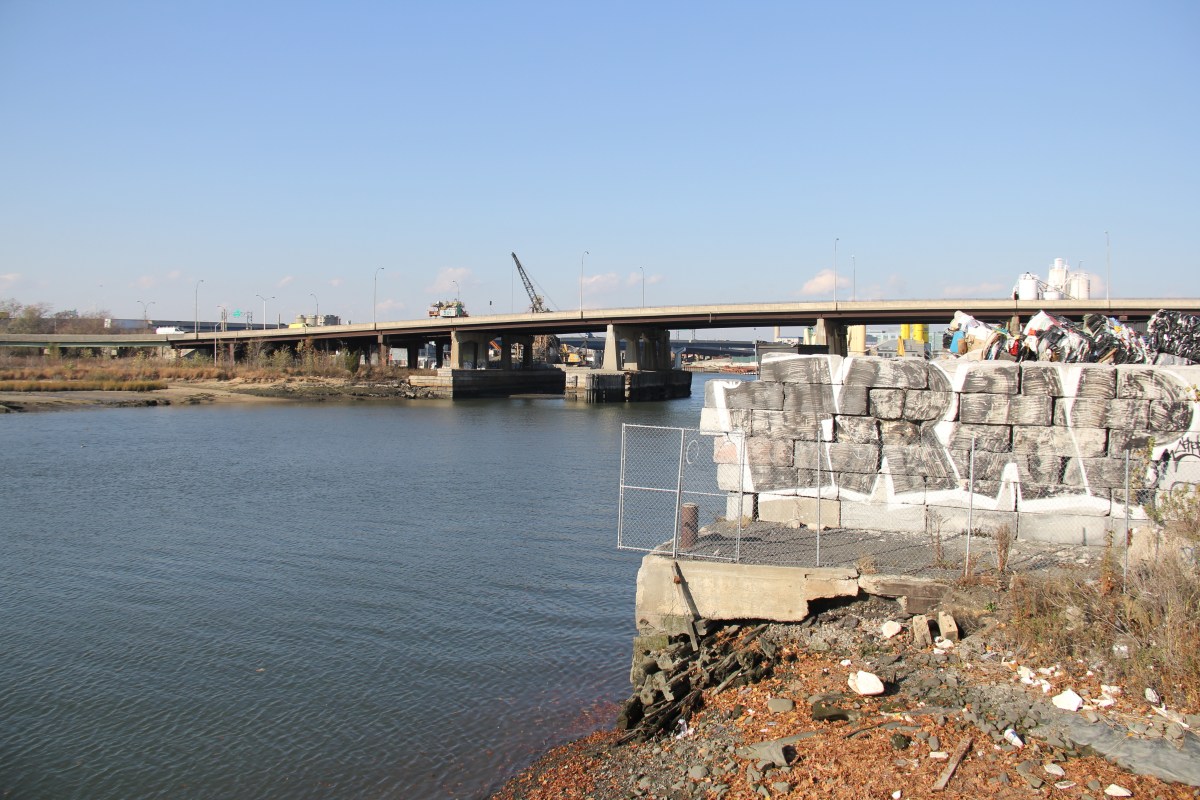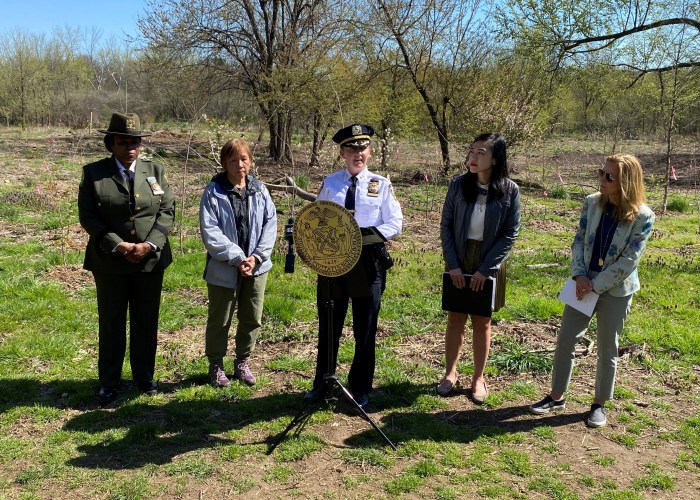Some foul business was discussed in Flushing this week between city officials.
Councilman Peter Koo and Commissioner Emily Lloyd of the Department of Environmental Protection (DEP) met deep underground on Tuesday to tour the Flushing Bay Retention Facility, which serves as a storage area for raw sewage and is meant to keep the sewage from entering Flushing Creek, but can only hold so much. The small body of water receives more human waste per year than any other dumping site, according to city records, leading Koo to call the creek “s–t’s creek.”
“Cleaning up this waterway has long been a top environmental priority of mine,” Koo said. “There is a popular phrase used by many when trying to explain they are in a bad situation: being up s–t’s creek without a paddle. With the amount of raw sewage that still enters it, the phrase might as well be changed to, up Flushing Creek without a paddle.”
With Mayor Bill de Blasio’s announcement that calls for residential development along the Flushing waterfront, Koo and advocacy groups like Friends of Flushing Creek are hoping the spotlight will help spur the city and state to take action and reduce the amount of sewage going into the creek.
“Now that the city has officially announced they are looking to develop the land along the waterfront, this is a great opportunity to shine a brighter light on this longstanding problem,” Koo said. “I will continue my work with DEP, the Friends of Flushing Creek, and every stakeholder in the community so that we can ultimately see the day where people can safely swim in these waters again.”
But a whole lot of waste must be cleaned before anyone can swim in there.
During rainstorms, the city’s sewage infrastructure is flooded out, causing unprocessed human waste to discharge into the bodies of water surrounding New York City. Flushing Creek and Flushing Bay receive the highest amount of this toxic payload, according to city records. Facilities like the one underground in Flushing are meant to minimize this problem, but advocates and local politicians say it’s not enough.
The city currently has no plan to reduce the sewage flow into the creek and Flushing Bay during heavy rainfall. The creek receives 1,166 million gallons per year and the bay receives 1,499 million gallons per year. Jamaica Bay, which is often thought of as one of the most polluted bodies of water, receives a comparatively small dose of 317 million gallons per year.
“Do you know how much human waste that is?” said Alex Rosa, a consultant for Friends of Flushing Creek, which is advocating for the city and state to reduce the amount of filth going into the Flushing bodies of water. “I’ve never calculated how many people you need to make that much waste. But I’m sure it’s a whole lot.”
The nonprofit group is currently working with the DEP through a state grant to create a long-term plan that would reduce the amount of pollutants in the waters. The different approaches and solutions to the waste problem are complicated and can often be murkier than Flushing Creek’s waters after a wet day, especially since people fish and kayak in the waters there.
For example, the city is considering sanitizing the waste with chlorine. But Rosa is cautious to embrace this plan because chlorine, she said, has been linked to several types of health problems, including cancer.
No set date has been made for when a plan would be put together and when it could be implemented. So for now, Rosa strongly urges people not to fish in the waters or get anywhere near them, for that matter. But she remains hopeful that soon people can do these things and much more.
“The synergies and efforts of everyone are finally aligning and we now have more attention,” she said. “The stars are aligned because the mayor is focused on creating a new community along the waterfront.”
RECOMMENDED STORIES


































